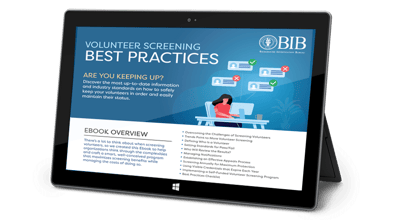While screening employees and staff has become standard practice, screening volunteers is also fast becoming a necessity. Failing to do so puts your employees, individuals or children at risk and leaves your organization open to liability.
Every organization is different, and volunteers bring unique issues with them that you or your team must handle. For example, the sheer number of volunteers can make screening and tracking them a challenge from a cost and man-power perspective. Often, organizations balance complex and demanding budgets, and the cost of screening all volunteers is a difficult decision for an organization to make. They may be forced to reduce the number of screenings to only certain types of volunteers, or they may conduct less thorough screenings in order to reduce per-screen costs.
Denying a person the opportunity to volunteer can cause conflicts for an organization and even elicit lawsuits. Parent advocacy groups often support screening but find it difficult to cope with the reality that someone they know may be screened out of volunteering.

There’s a lot to think about when screening volunteers, so we created this best practice checklist to help organizations think through the complexities and craft a smart, well-conceived program that maximizes screening benefits while managing the costs of doing so.
Best Practices Checklist
- Create a detailed list of Visitor vs Volunteer guidelines, and ensure it is communicated to staff and associates. This list determines who must be screened.
- Develop a clear and concise policy guideline as to what past offenses will prevent
a potential volunteer from passing the background screen. Communicate this to the potential volunteer prior to the background screen application. - Set up a notification system that allows the background screening firm to handle printing and mailing of the notification letters and the initial disputes.
- Establish a clear appeals process and build in some flexibility to make decisions.
- Screen annually for maximum protection.
- Issue visible credentials that expire every year. Make access to the school the responsibility of the volunteer to have their credentials properly displayed at all times.
- Consider a self-funded volunteer screening program before cutting the scope or
frequency of screening.
To learn more about these best practices and get the most up-to-date information and industry standards on volunteer screening check out our eBook "Volunteer Screening Best Practices"



